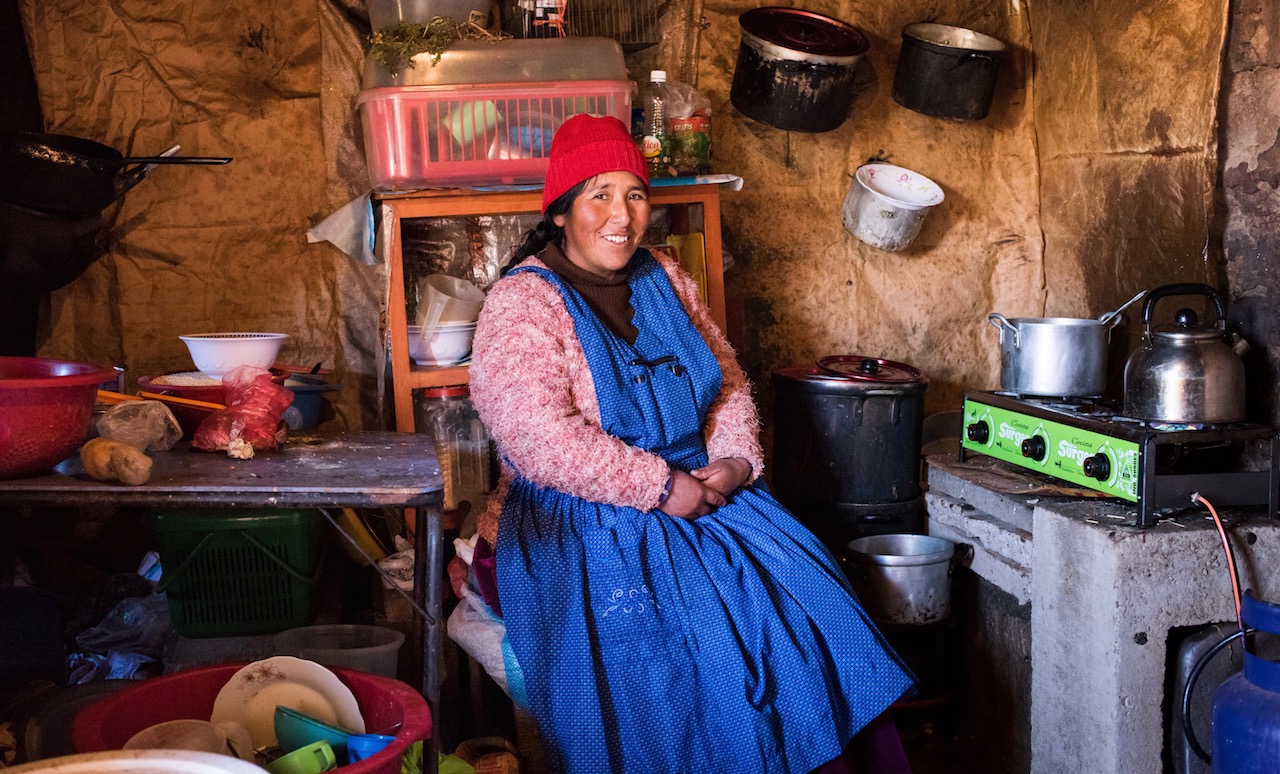Clean Cooking Reduces Household Air Pollution- A Leading Cause of Pneumonia

A HAPIN study participant cooking with LPG inside her home in Peru. Photo credit: Gates Archive/Omar Lucas Arapa Castro
By HAPIN trial investigators
This year, World Pneumonia Day (November 12) coincides with the 26thUN Climate Change Conference of Parties (COP26), thus the theme selected is air pollution, a well recognized risk factor for pneumonia.
Exposure to household air pollution from burning solid fuels, such as wood, animal dung, and coal, is a leading contributor to premature death and disability worldwide, including for diseases such as pneumonia, heart disease, stroke, and several others. More than 3 billion people worldwide continue to use solid fuels for cooking. Although estimates vary, household air pollution is responsible for at least 2.3 million deaths annually. The majority affected are in low-income settings where cooking with biomass is common and women and small children are the most affected. Thus, household air pollution is a major risk factor for pneumonia and the second top killer of children under the age of five. Household air pollution is estimated to be responsible for about 159,000 pneumonia deaths annually in this age group in low-income countries.
Efforts to date to reduce exposure to household air pollution—mainly by improving stoves that continue to burn solid fuels—have had little success in achieving the reductions in exposure deemed necessary for health gains. Even households with access to clean cooking fuels, such as liquefied petroleum gas (LPG) and electricity, often continue to rely heavily on biomass because of cost and access.
The trial enrolled 3,195 pregnant women in Guatemala, India, Peru, and Rwanda and is following them, their infant child, and an older adult woman in the home until the child’s first birthday.Preliminary results from the multi-country Household Air Pollution Intervention Network (HAPIN) trial suggest that an LPG stove and fuel intervention can overcome barriers to exclusive clean fuel use and reduce exposure levels to household air pollution to within WHO air quality interim targets.
While the papers are undergoing peer review, pre-prints made available this week report two important findings that show promise for the effects of the intervention on pneumonia. The pre-prints can be viewed here and here.
- First, the intervention—an LPG stove and continuous supply of fuel throughout this critical developmental period—was successfully delivered even during COVID lockdowns and was adopted almost exclusively even by households that had no previous experience with LPG.
- Second, the intervention achieved large reductions in household air pollution, with nearly 70 percent of the measurements of fine particulate matter (PM2.5) in intervention households below the World Health Organization Annual Interim Target 1 (35ug/m3).
Epidemiological modeling has shown that reductions of this magnitude could have a dramatic impact on childhood pneumonia. This will be explored directly by HAPIN investigators when they report the intervention effects on severe pneumonia in the next several months. In the meantime, this year’s World Pneumonia Day offers an opportunity to highlight the association between pneumonia and air pollution and provide encouraging news about interventions that can improve household air quality.


